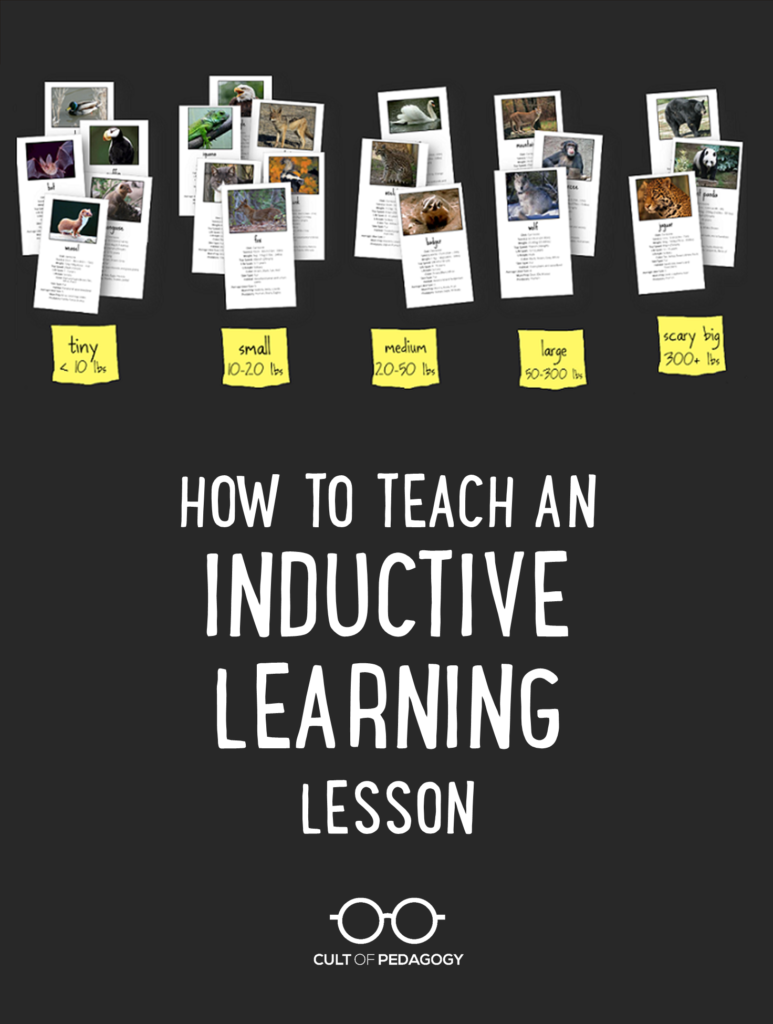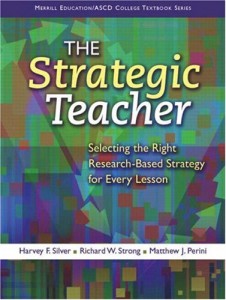

Sure, you’ve heard that we shouldn’t just spoon-feed information to our students, but what exactly should we be doing instead?
One possibility is inductive learning.
Inductive learning takes the traditional sequence of a lesson and reverses things. Instead of saying, “Here is the knowledge; now go practice it,” inductive learning says, “Here are some objects, some data, some artifacts, some experiences…what knowledge can we gain from them?”
A number of instructional approaches, including discovery learning, inquiry-based learning, and problem-based learning, could be considered inductive, and all of them are well-supported by research. If you’re just getting started with inductive learning, take a look at the video below, where we break down a very simple inductive strategy, one that takes less time and requires less planning than something like a PBL unit. It’s a method that can work with very simple concepts, like parts of speech, or more complex ones, like systems of government, and it would be appropriate for just about any grade level.
[Want to make videos like this? Learn more here.]
This strategy comes from a book I can’t seem to get enough of: The Strategic Teacher, by Silver, Strong, and Perini. This is the fourth research-based teaching strategy we’ve studied up close.

Try it and let me know how it goes. Or if you’ve already used this strategy or something like it and have finer points to share with the rest of us, please do. Happy teaching y’all. ♦
Like what you’ve seen so far?
If this one spoke to you, I’d love to have you come back for more. Join my mailing list and get weekly tips, tools, and inspiration — in quick, bite-sized packages — all geared toward making your teaching more effective and joyful. To thank you, I’ll send you a free copy of my new e-booklet, 20 Ways to Cut Your Grading Time in Half. I look forward to getting to know you better!